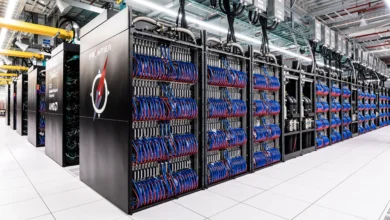
Is Nestle Behind Mounds Lake Project?
MUNCIE, Indiana – To dam the river, or not dam the river. This is the question being asked by Hoosiers living in East Central Indiana. We’ve heard plenty about the future need for water in Central Indiana, recreational opportunities and new residential developments to the area, but nothing has been mentioned about the largest user of water resources on the planet – Nestle.
The proponents have created an informative website and presented their project to locals…mainly focusing on the benefits to the community. State grant money was received by the economic developers in Anderson to pay for feasibility studies and marketing the project to the local media and residents affected by the reservoir. However, despite the 2010 documentary film, “Bottled Water“, which portrays Nestle as the worst exploiter of natural resources in the world today, they didn’t even receive honorable mention in the Mounds Lake proposal. Is that a coincidence?
Our sources told us that Nestle is unable to expand at their Anderson facility due to a lack of H2O. We were also curious about how much water they used, so we requested a top five users list from Anderson Water, but haven’t received a response. Not surprising.
We know the facility in Anderson doesn’t bottle water, but they rely on water for their operations. When you consider the following quotes from CEO, Peter Brabeck, you’ll understand how important water is to their corporation:
“Without water there is no sustainabilty for our company and for our shareholders. This has to be our chief priority. The continued availability of water is key to our continued ability to grow and to serve the consumers needs all over the world.”
“Water needs to have a price.”
I’d say water is essential to their business plans, yet there has been no mention about Nestle’s involvement in Mounds Lake.
If the Commission is given authority to go ahead, local taxing units will take a hit first. According to a recent article in the Herald Bulletin, “If the proposed Mounds Lake reservoir becomes a reality by 2021, local taxing units could lose an estimated $1.9 million in revenues.
Delaware County would lose $364k in tax revenue, and Daleville Schools would lose $137k. How would the losses be offset?
Rob Sparks, economic developer for Anderson and lead project manager for Mounds Lake, said:
The assessed value is expected to increase once the reservoir becomes a reality through the construction of new homes, housing additions and the relocation of businesses. He said in the short-term the proposed ‘Mounds Lake Commission’, which would oversee the operation of the reservoir, would have to absorb the costs to the local units of government.
“There would have to be a payment in lieu of property taxes,” Sparks said. “In the long-term there will be an increase in the assessed value as a result of the reservoir.”
The stated goal of the reservoir is to create “future water resources” for Central Indiana with an estimated cost of $400 million. The investment will be offset by developing high-end residential properties and selling off the water to other communities.
We’ve been told that urban sprawl, northeast of Indianapolis, has created the demand for more water resources, but industrial needs have been ignored. Why?
East Central Indiana lacks a portfolio of high-end homes, so we lose out on competitive bids for local headquarters from Carmel, Noblesville and Fishers. In fact, the real reason Jarden left their Daleville location for Fishers was due to executives living in Indy’s suburbs wanting less of a commute. Relocating to Chesterfield or Muncie wasn’t an option for them, or their wives.
Developing residential homes in the $500 thousand range would allow executives to move locally and create more competitive packages for local economic developers who talk with prospective companies looking to move their headquarters to East Central Indiana. Currently, Anderson and Muncie doesn’t offer the same amenities as Noblesville and Fishers.
By the way, to counter damming the East Fork of the White River, an alternative plan has been proposed by Hoosier Environment Council along with a small grass-roots campaign called Heart of the River. Their plan offers trails and economic development, but they’ve not been given state money to create a feasibility project or dollars to create an elaborate marketing campaign. Their plan doesn’t exploit existing resources, but leverages what we have in Delaware and Madison counties.
Don’t get us wrong – we fully grasp the features and benefits of a reservoir project like Mounds Lake to East Central Indiana. We can also see the benefits of Mounds Greenway, or the alternative plan. The alternative plan doesn’t solve the need for higher priced homes in the area, nor does it address the increased demand for water by industrial users like Nestle.
When we look at projects like a $400 million reservoir, which we know will cost closer to $600 million when it’s all over, we should see all the players sitting at the table who are advocating for it, but one seat is notably missing.
Why doesn’t Nestle have a seat at the table? Are Hoosiers paying $400-$600 million to help Nestle expand operations in Anderson?
Mounds Lake should be sold as a public-private partnership where Nestle invests in this project as well. Would they be willing to fund the losses to schools and other government units while the reservoir is under construction? The commission being formed to build and operate the lake might get more support if they had a financially strong entity like Nestle with them as they move forward.
Or, maybe the economic developers see Nestle’s involvement as a weakness. Maybe Hoosiers would be resistant to flooding over their homes, businesses and park systems for a corporate giant like Nestle.
We could see where leaving Nestle out of the equation would make sense, since they are a negative brand around the world for stealing water supplies from governments to make profit. Most recently, while California residents are facing water restrictions due to drought conditions, Nestle continues extracting and bottling thousands of gallons of water. According to Carey Biron of the MintPress:
“Nestle … is bottling California’s water, selling it, and profiting while the state suffers from a scorching, record-breaking drought,” the groups warned in a series of emails. “Friend, we are fuming. To date, Nestle has refused to acknowledge concerns about the water they are taking.”
Again, we know Nestle isn’t bottling water in Anderson now, but they obviously rely heavily on water for their operations. They are most likely the largest user of existing water supplies and will greatly benefit from damming the river and building a reservoir.
Also, ICYMI, last month, Senator Dan Coats (R) shared a rather bleak glimpse of the federal government’s probable lack of financial support for Mounds Lake. The Herald Bulletin’s, Heather Bremer reported that Coats told an audience:
“There will be a lot of competition for money and the pot is smaller,” Coats said. “You can’t factor in federal funding. Plan as if there weren’t federal funds available…look at creative financing, such as bonds and income generated by the project.”
Either way, when you have a company like Nestle, who places such a major emphasis on water for their future sustainability and shareholder value, you have to mention them early in the project and share their motives and involvement. Maybe they add viability to the project so they could be added as a partner. We should also know how much they will be using the new water resource. Will they be expanding if we approve Mounds Lake improvement?
Not mentioning them makes the project look suspicious. Hoosiers know who Nestle is and what they do, so it’s best to discuss their current and future needs. Maybe they can be a financial partner in the project, while being a significant user/buyer of future water. But, don’t try to keep Nestle hidden from the project – it looks disingenuous.







Indy – Anderson dam NOT needed
Here are a few things I learned about the Mounds Lake Reservoir proposal.
Indianapolis never wanted the Anderson dam. Idea was created by a private marketing group, Corporation for Economic Development, Anderson , IN.
Internal business report from Indianapolis utility disclosed that Indy reviewed their options and made this conclusion. “Adequate Local Resources: 30-40 yrs” No plans to buy the Anderson water in their report.
The Indy document gave details on how they reached their conclusions. Looking at the Indy info and the Anderson sales report, saw several reasons why the dam is a bad idea. Here are two of several.
Anderson report skipped 18 less expensive of 20 alternatives for future water needs. Anderson promoter only considered a dam and the next most expensive water alternative, pipe lines for the Indianapolis area.
The Indy 18 less expensive alternatives could apply to other communities in the region.
So, why would others need to buy from Anderson???
Anderson report skipped cost to customer. Indy made a cost analysis and it shows a regional source (Anderson dam) would be 5 times more expensive for the customer.
And I noticed a few major costs items missing in the Anderson proposal that can drive the $ 400M much higher.
I requested some oversight. Request for oversight was REJECTED by the Madison County Council. Oversight would have disclosed this project is NOT cost effective and was rejected in 2011, 3 years ago.
The intended customer and about 12 organizations are opposed to the dam for various reasons and have been ignored.
So that’s a few things I have learned.
Reservoir Shark
Mike Swinford
Chesterfield, In
Excellent post!